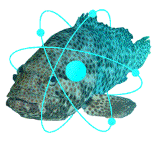Speaker
Description
Sandra Soares1), 2), 3), Joaquim Kessongo1), 2), 3), Yoenls Prata1), 2), 3), Luis Peralta1), 4) and Pedro Almeida3), 5)
1) Laboratório de Instrumentação e Física Experimental de Partículas (LIP), Lisboa;
2) Faculdade de Ciências da Universidade da Beira Interior (FCUBI), Covilhã;
3) LabExpoRad – UBIMedical, Universidade da Beira Interior, Covilhã;
4) Faculdade de Ciências da Universidade de Lisboa (FCUL), Lisboa;
5) Faculdade de Engenharia Civil e Arquitetura (FECAUBI), Covilhã.
Corresponding Author(s): shsoares@ubi.pt
Scientific and technological knowledge are fundamental in social and economic development and contribute to the improvement not only to populations social well-being, but as well as to the quality of life.
Although, in recent decades, the Portuguese-speaking African countries (PALOP) have developed their system of higher education, still there is a clear insufficiency in the number of MSc and PhD graduates, particularly in areas with a great potential for economic and social development, such as life related sciences. This reality shows there is room for progress and improvement in those areas.
One of the goals of the present project is to help young African students to develop skills and knowledge, in the fields of life and environment sciences. In this way, this research should contribute to provide highly trained human resources, essential to assure the enhanced role and revitalization of African universities and to create conditions for scientific research in the field of health, life and environment sciences.
Radon is a radioactive noble gas ubiquitous in the natural environment including
air, soils and water. Its importance arises from two different aspects: on one hand it is an environmental hazard with recognized effects in the human health; on the other hand, it is a useful geophysical tool for tracing dynamic properties of the environment. So, our objective is to develop a system for detection and monitoring of radon in the air and in water for human consumption seeking to improve life quality. Population exposure to radon occurs primarily through inhalation, resulting in radiation to the lung and to a lesser degree other organ. Yet, in conditions of very high radon concentrations in drinking water, ingestion can be the primary source of exposure of organs other than the lungs. The radiological evaluation of water is therefore important to assess concentration and doses, particularly of long half-life isotopes that can circulate on the public water distribution systems and reach the user, being responsible in some circumstances for exposures above recommended levels.
The aim of this project is to develop and fully test low-cost alpha detectors for radon. In a first stage, our priority is to assess the radon concentration, in air and water, in a previously selected area. The radon concentration indoor is measured using CR-39 detectors and for the drinking water the RAD7 radon equipment from the American manufactures Durridge is used. The radon concentration in studied dwellings ranged between 30 to 415 Bq/m3 and for the collected water samples values between 39 to 207 Bq/L were obtained.
